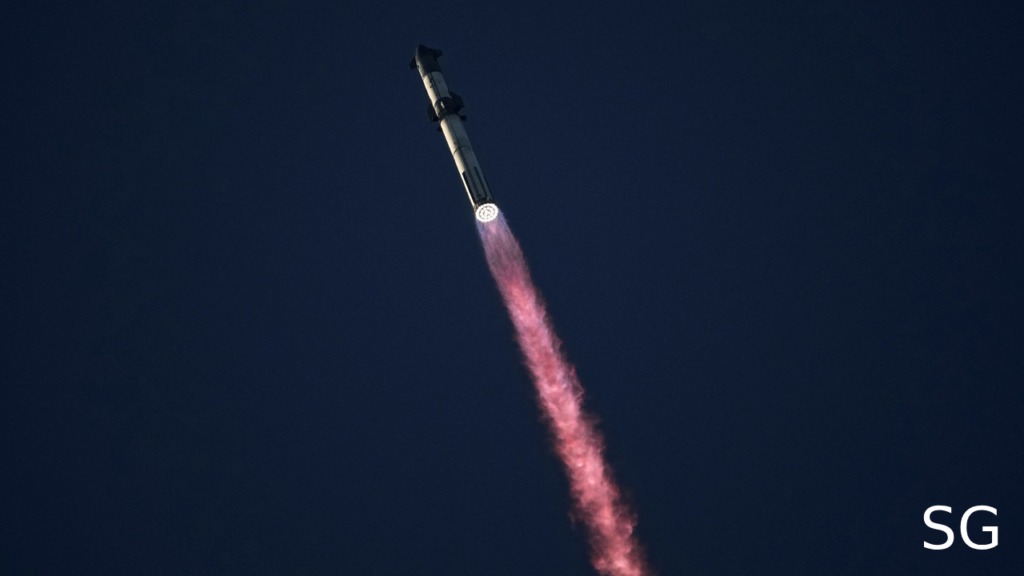Table of Contents

SpaceX Starship rocket broke apart in space shortly after launching from Texas on 16 Jan
Rocket Anomaly Leads to Breakup
A SpaceX Starship rocket broke apart in space shortly after launching from Texas on 16 Jan 2025, impacting airline flights over the Gulf of Mexico and marking a setback for Elon Musk’s rocket program.
The incident occurred eight minutes into flight when SpaceX mission control lost contact with the newly upgraded rocket, which carried a test payload of mock satellites but no crew.
Visual and Official Confirmation
Video footage captured over Port-au-Prince, Haiti, showed streaks of orange light and smoke trails. SpaceX Communications Manager Dan Huot later confirmed the failure, citing an issue with the rocket’s upper stage.
Flight Disruptions and FAA Response
The breakup caused widespread air traffic disruptions:
- Dozens of flights were diverted or delayed.
- Departures from Miami and Fort Lauderdale airports were delayed by approximately 45 minutes.
The Federal Aviation Administration (FAA) implemented temporary airspace restrictions to ensure safety but later resumed normal operations.
Preliminary Cause of Failure
According to SpaceX, an internal leak of liquid oxygen fuel increased pressure in the rocket, leading to its breakup.
Program Setbacks and Investigation
The mishap could prompt an FAA investigation, potentially grounding the Starship program temporarily. Musk aims to conduct 12 test flights this year, but the timeline may face delays depending on the FAA’s review and subsequent fixes.
Test-to-Failure Approach
The Starship upper stage, featuring significant upgrades, was designed for controlled splashdown in the Indian Ocean. Despite prior successful missions, the failure occurred during a previously flown phase.
The reusable Super Heavy booster successfully returned to its launchpad seven minutes after liftoff, demonstrating advances in booster recovery technology.
Industry Competition
The incident followed Blue Origin’s successful first orbital launch of its New Glenn rocket, highlighting the competitive dynamics between leading private space companies.
Looking Ahead
SpaceX’s iterative testing philosophy embraces occasional failures to drive innovation. While the setback poses challenges, the company remains focused on its long-term goals, including missions to Mars and large-scale satellite deployment.